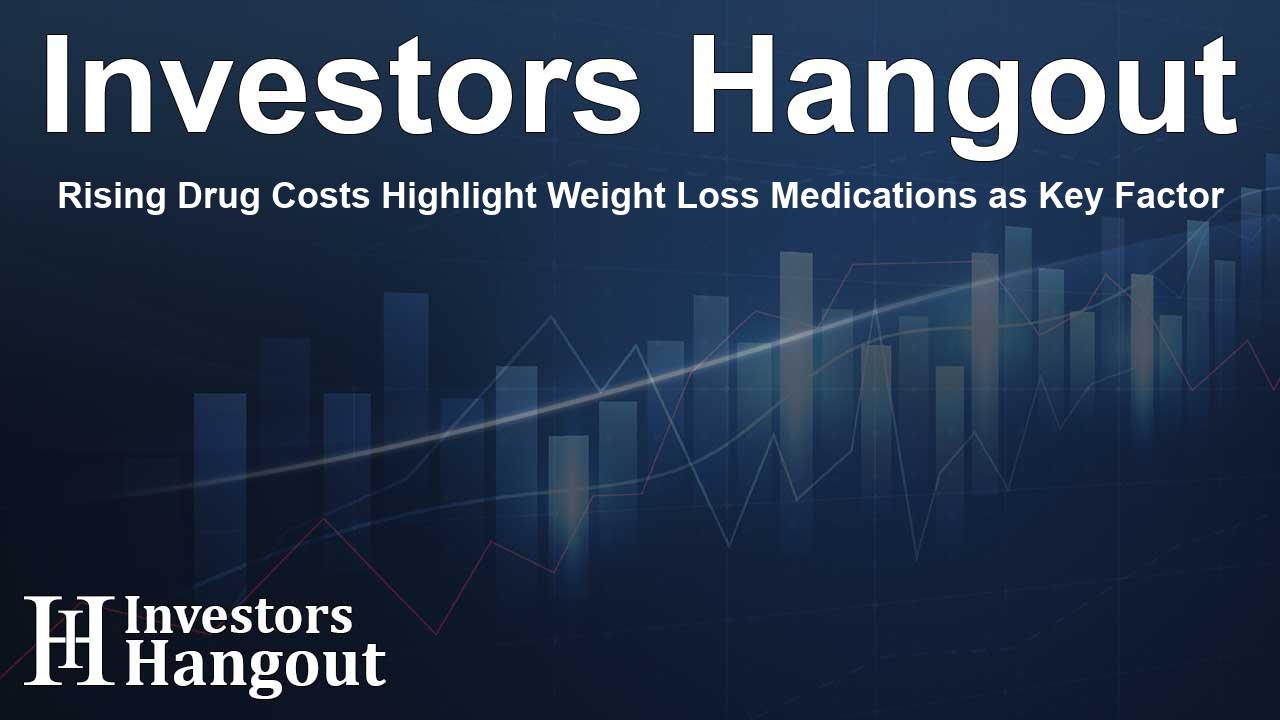Rising Drug Costs Highlight Weight Loss Medications as Key Factor

Introduction to Rising Drug Spending
The U.S. has witnessed a notable increase in prescription drug spending, reported to be $805.9 billion in a recent analysis. This figure reflects a substantial 10.2% rise compared to the previous year, with weight loss drugs emerging as a primary driver of this trend. The escalating demand for GLP-1 receptor agonists, which have gained traction for managing diabetes and obesity, significantly contributes to this expenditure surge.
Impact of GLP-1 Drugs
GLP-1 drugs play a transformative role in treating metabolic disorders. As pharmacy professionals note, these medications not only assist patients in controlling their weight but also help manage diabetes effectively. This dual utility has catapulted them to the forefront of drug spending, making them one of the fastest-growing categories in the pharmaceutical market.
Concerns About Supply Chain Vulnerability
Despite the benefits of GLP-1 medications, there are growing concerns regarding their supply chain stability. Proposed federal tariffs on pharmaceutical ingredients, particularly those sourced from regions with manufacturing uncertainties, could lead to shortages. Such disruptions can force healthcare providers and patients toward pricier branded alternatives, undermining the cost-effective benefits that generics typically offer.
Hospital and Clinic Spending Trends
In analyzing the landscape of drug spending, clinics reported a sharp 14.4% increase, bringing total expenses to $158.2 billion. In contrast, non-federal hospitals saw a more subdued growth of 4.9%. While shortages of GLP-1 medications are settling down, the complexity introduced by direct-to-consumer sales channels may obscure tracking of actual usage trends.
Future Projections for Drug Spending
Looking ahead, projections indicate that U.S. drug spending is anticipated to rise further by 9-11% in the coming year. Alongside this, clinic expenditures might see an increase ranging from 11-13%, while hospital expenditures may grow by 2-4%. These projections underscore the economic pressures and market dynamics anticipated in the pharmaceutical arena, influenced by various factors.
Factors Influencing Spending Growth
Several critical aspects are set to shape the market in the upcoming year:
- Oncology Spending: Continues to experience growth, fueled by the increase in new, costly medications and the broader application of existing treatment regimens.
- Vaccine Expenditures: Post-pandemic, spending on vaccines has diminished, a trend that might persist due to rising skepticism toward vaccination.
- Emergence of Generics: The introduction of new generics and biosimilars is expected to provide lower-cost alternatives as patents for key medications expire, potentially calming overall spending increases.
Conclusion: Insights for Healthcare Leaders
The insights derived from these trends and reports can significantly equip pharmacy and healthcare leaders for thorough planning. Understanding the financial implications of medication spending is vital to maintaining operational viability in healthcare settings. As the market continues to evolve, the focus remains on ensuring access to essential medications while managing costs effectively.
Frequently Asked Questions
What are GLP-1 drugs?
GLP-1 drugs are medications used primarily for the treatment of diabetes and obesity, helping patients manage weight and blood sugar levels.
Why is U.S. drug spending increasing?
The increase is largely due to higher expenditures on weight-loss medications and emerging therapies in oncology, combined with broader treatment applications.
How do tariffs impact drug costs?
Proposed tariffs on pharmaceutical ingredients could lead to higher costs, supply shortages, and a shift to more expensive brand-name drugs.
What is the role of generics in drug spending?
Generics provide lower-cost alternatives to brand-name medications, and their introduction is crucial for moderating overall drug spending growth.
What can healthcare leaders do in response to these trends?
Healthcare leaders can use these insights for strategic planning, ensuring access to affordable medications while managing expenditures effectively.
About The Author
Contact Evelyn Baker privately here. Or send an email with ATTN: Evelyn Baker as the subject to contact@investorshangout.com.
About Investors Hangout
Investors Hangout is a leading online stock forum for financial discussion and learning, offering a wide range of free tools and resources. It draws in traders of all levels, who exchange market knowledge, investigate trading tactics, and keep an eye on industry developments in real time. Featuring financial articles, stock message boards, quotes, charts, company profiles, and live news updates. Through cooperative learning and a wealth of informational resources, it helps users from novices creating their first portfolios to experts honing their techniques. Join Investors Hangout today: https://investorshangout.com/
The content of this article is based on factual, publicly available information and does not represent legal, financial, or investment advice. Investors Hangout does not offer financial advice, and the author is not a licensed financial advisor. Consult a qualified advisor before making any financial or investment decisions based on this article. This article should not be considered advice to purchase, sell, or hold any securities or other investments. If any of the material provided here is inaccurate, please contact us for corrections.
